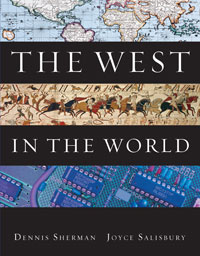1 A) differentiated social organization. B) irrigation. C) skill with tools. D) writing. 2 A) domesticated plants and animals B) an egalitarian society C) thriving cities D) commercial and cultural exchange with other societies 3 A) indebtedness B) race C) the status of one's parents D) defeat in war 4 A) their pessimistic gods and demons required it. B) the difficult environment required planning for successful irrigation. C) it would enable them to defend themselves better from invading tribes. D) elites required it. 5 A) prostitution B) divorce C) illegitimate children D) adultery 6 A) religion B) a legal code C) satraps D) ziggurats 7 A) prohibited the idea that women were the property of their husbands. B) included different punishments for the three social orders. C) did not protect children from unfair treatment. D) was intended to apply to only Hammurabi's period of rule. 8 A) four-wheeled carts B) bloodstone spears C) battle-axes D) an oral culture 9 ma'at ?A) respect for the law B) dedication to family C) attaining wealth through warfare D) the connection between behavior and prosperity 10 A) greater prosperity. B) the effective administration of a centralized government. C) economic and political problems. D) a loss of belief in immortality and the afterlife. 11 A) imperial expansion B) emphasis on religion at the expense of administration C) trade, peace, and strong defense D) her own personal enrichment 12 A) successive rulers continued to enjoy similar success. B) the Egyptian empire expanded. C) challenges from invaders contributed to the downfall of the empire. D) subsequent pharaohs turned to isolationist policies to preserve the empire. 13 A) Hittite metallurgy. B) Phoenician craftsmen. C) Egyptian pyramid builders. D) Babylonian mathematics. 14 A) dietary restrictions. B) defining Jews as different from other peoples. C) the idea that Yahweh demanded exclusive worship. D) the Semitic language. 15 A) their exclusion from formal prayer B) the shift to local worship C) the strengthening of the family as a social and religious unit D) the experience of concubinage 16 A) advanced military techniques. B) metallurgical skills. C) adeptness with Aramaic. D) disregard for learning and art. 17 A) his dedication to the worship of a single god. B) the great fortifications of Nineveh built under his rule. C) embankments built to restrain the Euphrates. D) his massive library, which preserved Mesopotamian literature. 18 A) commerce. B) tribute and taxation. C) warfare and plunder. D) the personal contributions of their rulers. 19 A) it was poorly located and vulnerable to conquest. B) Babylonian rulers had alienated even their own peoples and lacked support. C) Babylonians were incompetent warriors. D) the Persians possessed superior technology. 20 A) a concern with ethics and justice B) astrological predictions C) belief in an afterlife D) the connection between history and religion 21 A) the persistence of religious beliefs B) warfare C) differentiated societies D) patterns of interaction and cross-fertilization 22 A) They were originally from the region north of the Zagros Mountains. B) They were able to migrate vast distances with the aid of four-wheeled carts. C) Indo-Europeans adopted the Sumerian written language, cuneiform, and applied it to their spoken language. D) Indo-Europeans differed from other ancient civilizations, in that they believed in only one god. 23 A) Menes was the first king to unify the entire Egyptian land. B) Hatshepsut was a female pharaoh who tried to restore traditional Egyptian politics. C) Akhenaten (Amenhotep IV) forced Egyptians to worship a large number of traditional deities. D) Ramses II temporarily restored Egypt's greatness during the New Kingdom era. 24 Homo sapiens came from which region of the world?A) sub-Saharan Africa B) North Africa C) the Middle East D) Macedonia





